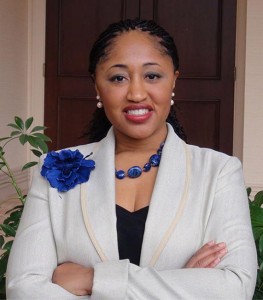 Community Matters is a biweekly opinion column. The views expressed are solely the author’s.
Community Matters is a biweekly opinion column. The views expressed are solely the author’s.
“Vulnerability is the birthplace of innovation, creativity and change.” — Brene Brown
Those of us who are working to intentionally increase diversity in Arlington are consistently striving to achieve the right balance, in the right way, at the right time. Which diversities are the right diversities? How do we measure progress on diversity? Are diverse people held to a different standard? Are they sometimes expected to be twice as good, but also given more allowances when those in power are searching for diverse representation?
I believe it is important for those with underrepresented backgrounds to see people who look like us, in all fields. I believe that it’s important to have diverse political and ideological views represented to find the best solution. I also believe that how we live each day, in conjunction with our experiences, may give us a unique perspective on life and affect how we approach challenges. The challenge is how we get here.
When I founded Virginia Leadership Institute in 2006 (now known as Vote Lead Impact) our goal was to increase the number of Black elected officials in Virginia. We strived to make the number of African Americans serving in public office, from school board to Congress, proportional to the percentage of African Americans registered to vote in the Commonwealth.
Proportional representation is just one way to measure whether we have enough diversity. While working towards that goal, it is also important to consider the diversity among the groups of people we are recruiting, as no group is monolithic. We may never reach full diversity in Arlington (no matter what our definitions of diversity are) but as we strive for it, here are a few points to consider.
Acknowledge our privilege — No matter what your privilege may be, we have to acknowledge it as we bring new people on board. It is easy to become comfortable in our circles. If we recognize the need for more diversity, inclusion comes after we identify our own circumstances and embrace those who are different.
Avoid tokenism — When we feel like we will be publicly scrutinized for our lack of diversity, it’s tempting to just pick anyone who would “check the box”, without looking at their qualifications. In the long run, selecting the most qualified person who meets all of our criteria, including diversity, is the best option.
Build a pipeline — Developing a pipeline should be a critical component of our growth strategy. Whether we are engaging youth and teaching them about our issue area, holding formal training on how to lead in our field or organization, or recruiting underrepresented populations to serve on subcommittees before joining the board or leadership, it is important to actively prepare future leaders.
Consider our recruitment methods — A common concern with increasing diversity and inclusion is that we can’t find the right people. Before beginning recruitment, we should expand our networks to develop relationships with new groups by intentionally reaching out to organizations and leaders in that community. Many organizations are adopting versions of the Rooney Rule, a National Football League policy that requires league teams to interview ethnic-minority candidates for head coaching and senior football operation jobs.
Focus on retention — We often put work into recruitment, but not on retention. We can help retain diverse team members by addressing problems immediately, confronting our personal biases and those of our team members, and structuring opportunities for members to learn from each other.
Ultimately, Arlington will have to determine our own calculus on which diversities we prioritize, and when and how we measure progress. As a start, we must sustain the dialogue and action that we have begun, no matter how uncomfortable it may become or how vulnerable we may appear.
Krysta Jones has lived in Arlington since 2004 and is active in local politics and civic life. This column is in no way associated with or represents any person, government, organization or body — except Krysta herself.

